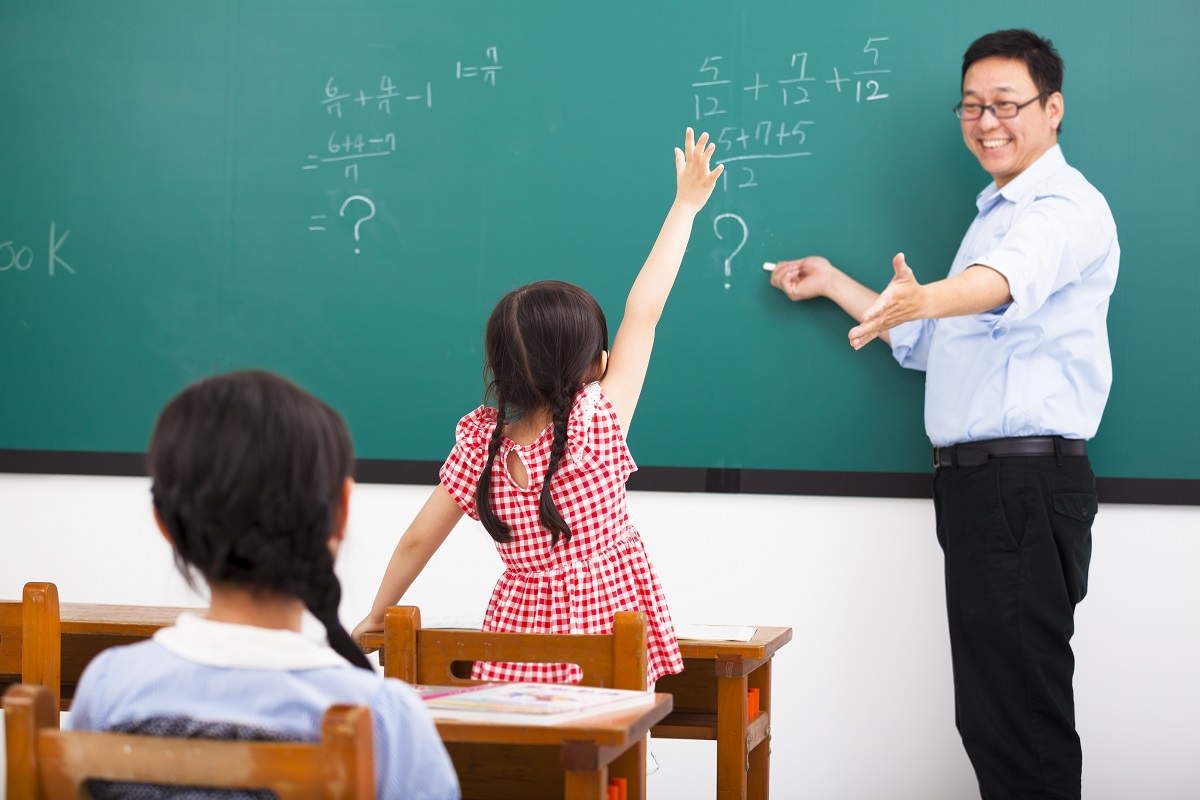Find the Best Primary Science Tuition Singapore for Enhanced Learning
Find the Best Primary Science Tuition Singapore for Enhanced Learning
Blog Article
A Comprehensive Overview to the Numerous Learning Methods in Main Scientific Research Guideline
The exploration of diverse learning approaches in key science instruction offers a possibility for teachers to enhance pupil interaction and comprehension significantly. By examining hands-on discovering techniques, inquiry-based strategies, and collective techniques, we can recognize efficient practices that provide to various learning designs.

Hands-On Discovering Strategies
Hands-on understanding techniques play a critical function in key scientific research instruction, engaging students in active exploration and experimentation. These methods allow learners to communicate directly with products and phenomena, fostering a deeper understanding of scientific concepts. By using manipulatives, models, and real-life experiments, educators create an environment where students can observe, hypothesize, and test their concepts.
Such strategies not just improve comprehension however also cultivate crucial thinking and problem-solving abilities. When pupils join tasks like developing easy devices, planting seeds, or performing chemical responses, they are urged to ask inquiries and seek answers through their very own observations. This experiential method helps to debunk complicated scientific principles, making them much more relatable and available.
In addition, hands-on understanding advertises partnership amongst peers, as trainees typically operate in groups to carry out experiments or share findings. This synergy not only improves their discovering experience but additionally establishes important social skills. Ultimately, incorporating hands-on methods in key science instruction promotes a lifelong love of discovering and curiosity concerning the natural globe, laying a solid structure for future academic searches in science and past.
Inquiry-Based Knowing
Inquiry-based understanding is a training strategy that encourages students to ask questions, investigate phenomena, and create their own understanding of clinical principles. This technique changes the focus from standard teacher-led instruction to a much more student-centered experience, where students take the initiative in their academic trip. By cultivating curiosity, inquiry-based discovering advertises deeper interaction with the product, allowing trainees to discover subjects in a significant context.
In method, this strategy frequently includes hands-on experiments, monitorings, and crucial thinking activities that straighten closely with the clinical technique. Pupils are encouraged to create theories, style investigations, and evaluate data, which cultivates crucial abilities such as analytic and logical reasoning. The function of the educator in this structure is to facilitate expedition, guiding pupils via the questions procedure while motivating independent thought and cooperation.
In addition, inquiry-based understanding supports a sense of possession over the knowing procedure, encouraging trainees to seek knowledge proactively. This technique not only improves understanding of clinical concepts however also fosters a long-lasting love for understanding, equipping pupils with the skills necessary to browse an increasingly complex world.
Collaborative Discovering Approaches
Joint discovering techniques empower pupils to take part in meaningful communications with peers, promoting a shared duty for their academic end results. In key scientific research instruction, these approaches motivate learners to function together to check out scientific ideas, resolve troubles, and conduct experiments (primary science tuition Singapore). By taking part in team activities, pupils can leverage varied perspectives, permitting richer understanding and retention of scientific understanding
One key element of collaborative discovering is the emphasis on interaction skills. Pupils should express their thoughts, listen proactively to others, and work out concepts, every one of which are vital competencies in both real-world and academic contexts. This social communication not just enhances their understanding of clinical concepts however additionally promotes team effort and problem resolution skills.
When trainees see the worth of their contributions within a team, they are much more likely to take possession of their understanding trip. In general, including collective understanding approaches in primary scientific research guideline grows a vibrant understanding atmosphere that prepares students for future scholastic and social difficulties.
Innovation Integration in Science
The assimilation of innovation in main science guideline enhances learning experiences by giving ingenious tools and sources that sustain various training techniques, consisting of collaborative learning - primary science tuition Singapore. The usage of digital platforms, simulations, and interactive applications permits trainees to engage deeply with clinical concepts, helping with an extra hands-on technique to knowing
Virtual labs, for instance, make it possible for students to conduct experiments securely and effectively, promoting inquiry-based discovering. These tools can replicate real-world scientific circumstances, allowing pupils to imagine intricate processes that would be tough to replicate in a standard classroom setup. Furthermore, innovation fosters interaction and collaboration among pupils, as they can share findings and collaborate on tasks through on the internet platforms.
Additionally, multimedia presentations and instructional video clips can enrich lessons by dealing with varied learning styles, making abstract principles much more obtainable. Information evaluation tools also equip trainees to accumulate and interpret scientific data, strengthening crucial thinking skills. Generally, the critical incorporation of technology in main science look at this website direction not just improves interaction yet additionally prepares pupils for a highly advanced society, equipping them with important the original source skills for future scientific ventures.
Separated Guideline Approaches
Set apart guideline methods are necessary for resolving the varied demands of students in primary scientific research education and learning. These approaches make it possible for teachers to tailor their mentor approaches to fit differing capacities, passions, and finding out designs within the classroom. By employing differentiated guideline, educators can produce an inclusive environment that cultivates interaction and improves understanding of clinical principles.
One efficient strategy is to make use of versatile grouping, which permits trainees to collaborate with peers at comparable ability levels or with varying point of views. This approach urges peer discovering and promotes critical reasoning. Additionally, supplying options in assignments can encourage trainees, permitting them to choose tasks that resonate with their interests while still satisfying curricular objectives.
Additionally, incorporating tiered tasks is another useful technique. Deliberately tasks with differing levels of intricacy, educators can make sure that all pupils are properly tested, no matter their efficiency. Utilizing formative analyses to gauge recognizing further allows educators to adjust their training approaches dynamically, ensuring that each learner obtains the assistance they need.
Eventually, applying distinguished guideline strategies in main scientific research education not only improves pupil learning outcomes however likewise grows an interest for science, preparing trainees for future scholastic searches.

Verdict
In summary, reliable primary science guideline special info necessitates a complex approach that includes hands-on learning, inquiry-based techniques, and joint techniques. The combination of innovation and differentiated direction additionally provides to diverse discovering designs, fostering an atmosphere favorable to expedition and critical thinking.
The expedition of varied understanding methods in key science direction provides a possibility for instructors to boost student engagement and comprehension substantially.Hands-on understanding strategies play a crucial role in primary science direction, engaging students in active exploration and testing.Inquiry-based discovering is a training technique that motivates trainees to ask concerns, check out sensations, and build their own understanding of scientific concepts.Collaborative knowing techniques equip students to engage in significant interactions with peers, fostering a shared responsibility for their educational outcomes. On the whole, including joint discovering techniques in primary scientific research direction cultivates a dynamic understanding setting that prepares trainees for future academic and social obstacles.
Report this page